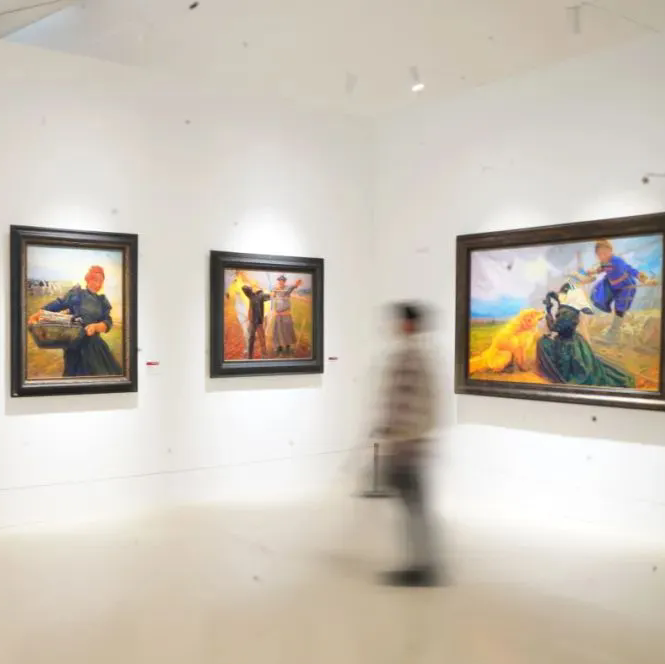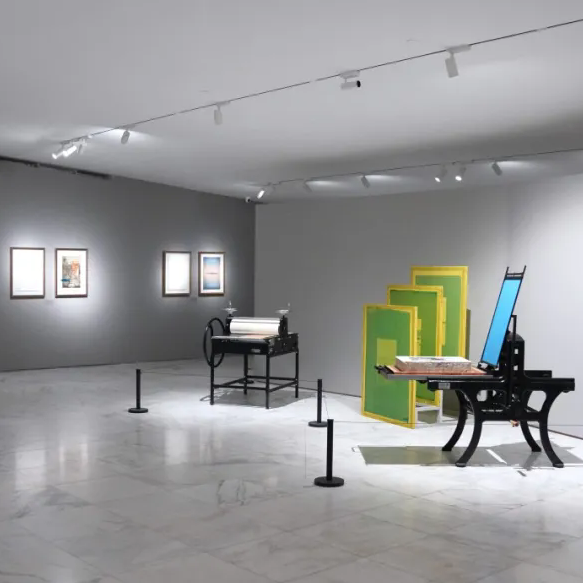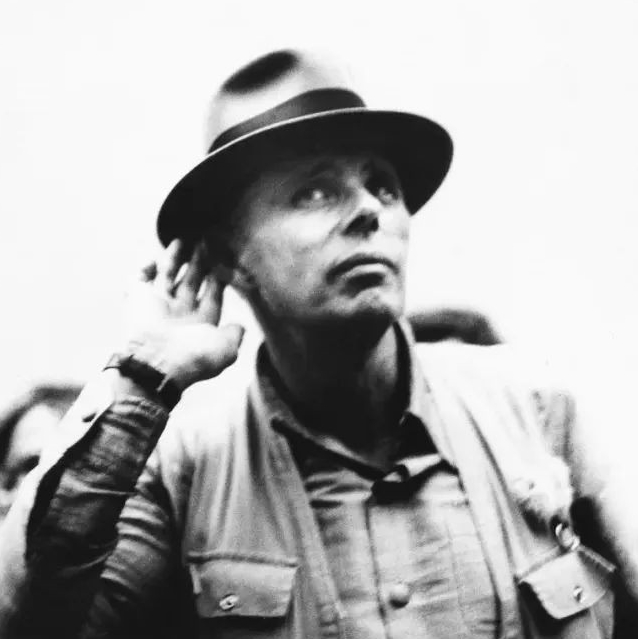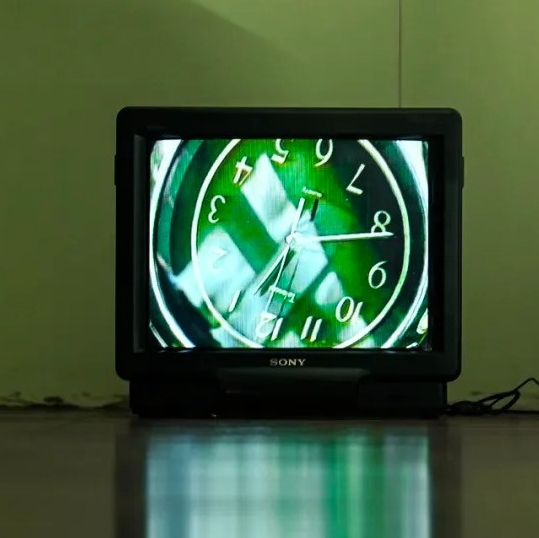
In 2010 Xu Longsen’s large-size landscape paintings were exhibited in the Palace of Justice, Brussels. In this 100 meter high space, ten scrolls with a height of 20 - 30 meters and a width of several meters hung in the air following the structure of the building, forming a complete installation that worked together with the entire space.
The exhibition was entitled High Mountain and the mountain was the theme of each and every work there. All the peaks were high, up to the sky, alone, or in a group. The painting on Xuan paper was somehow translucent because they hung up in the air, and people could enjoy them from both sides. With the flow of air, the giant paper moved slightly, and the landscapes on the paper moved too, like a dream. In such a grand space for installation painting, the audience were walking and feeling. With traditional materials, the traditional Chinese paintings created by Xu Longsen were presented in a way that was totally different from that of normal traditional Chinese paintings. He designs and creates works for modern residential public spaces. When Xu Longsen saw the space at the Palace of Justice, Brussels, he felt the space and his works could add glory to each other and were perfect for each other. It is sure his landscape paintings were not overwhelmed by the splendour of the Palace of Justice. On the contrary, they looked more spectacular in this magnificent building and brought new vitality to this regal space.
[gallery link="file" orderby="title"]
Landscape plays a key role in Chinese art history and it is the pinnacle of the art world. The mountains and waters are at the core of any Chinese landscape painting; water is the water from the mountain, along the mountain. However, in China, a country of countless high mountains, every mountain has a different shape and a unique style. People have always loved mountains. The mountain stabilizes the land with giant volume, symbolizing stability and permanence; the mountain nourishes all lives as a symbol of reproduction and richness. The mountain is so high and closest to the temple of the heaven worshiped by Chinese people, though there are threats and dangers inside. Every mountain is a holy land for offering sacrifice to god. Confucius has said “the benevolent enjoy the mountains” which means the mountain is the symbol of peace, benevolence and the social moral system pursued by Confucians. China’s Buddhists and Taoists also deem the mountain as the best residence for the discovery of the hearts. The Buddhists built temples on the mountains and devotional
Buddhists worship the Buddha on the mountains. Taoism has the most far-reaching influence on the Chinese landscape painting. The Tao of nature is from nothing. People can feel the essence of the nature, the infinity of the universe and the beauty of emptiness and nature on quiet mountains. The Chinese character for “immortal being” is a combination of two characters, “people” and “mountain”. So the character literally means people within mountains. The mountain is a centralized reflection of aesthetics and the world view of Chinese people during their long history.
Xu Longsen respects traditional culture and his landscapes remind people of the integration, freedom and emptiness in Chinese traditional landscapes. However, his mountains are not the mountains where people live. There is no house, no people, even less plants, not to mention any literal inscription, but these giant installation paintings have a power to spiritualize the space. The rising peaks constitute pure visual compositions and such pure images seem to symbolize an ideal. Is it the imagination of the way of nature? Is it the pursuit for supreme art? The landscapes here are grand, but not heavy; they’re vivid with a free style, reflecting the view of the artist on the art-grandness, endlessness, loftiness and harmony.
The sheer size of Xu Longsen’s paintings means that he must have some novel painting skills. The artist pastes the paper on a very tall, very wide wall and then creates on an elevating platform. By this method, the work breaks the limitation of the creative method for traditional water ink paintings and shows fresh painting skills.
He never needs a draft when he creates a large-size painting. Instead he directly draws on the paper with a giant brush. He’ll rip off the part of the paper he feels dissatisfied with and remakes the paper for redrawing the part. His paintings are featured with layers of water polishing and he even creates work over a few years. He said his works were irrepeatable. Like an ancient artist, Xu Longsen likes to climb the mountains to make the landscapes from his heart. Sometimes he may be inspired by the structure or texture of some ordinary articles so that he can create his landscapes in a different way. For instance, inspirited by Taihu rocks, he created the fresh and unique work series “Rocks” which show strange giant abstract blocks with a dense composition of images.
Xu Longsen also creates small-size works. Sometimes he intentionally uses traditional forms, like round, fan-shaped, or long scrolls. He shows his talent in painting in the same layout, but with a brand-new abstract landscape. He has focused on sculpture, so he is good at the composition of image and he is able to create changing exquisite compositions with layers of inks, dense or light.
Invited by Italy, Xu Longsen exhibited in the summer of 2011 ten of his giant works above the cultural relics of ancient Rome in the Museum of Roman Civilization, a grand palace building. Entitled as Xu Longsen—On Top of Two Empires, this exhibition built a dialogue between China and Italy, two representatives of Oriental and Western civilizations.
It is a huge challenge for Xu Longsen to transcend tradition while inheriting it and to create a new modern painting context in the form of a traditional Chinese painting. It is fair to say that his works not only represent some of the most astonishing breakthrough in Chinese painting, but also bring out an exciting new outlook for modern art.
Copyright © 2011 Beyond Art Space All rights reserved.
The views expressed in this column are the author’s own and do not represent those of CAFA ART INFO.




























